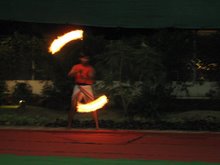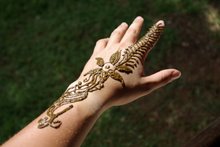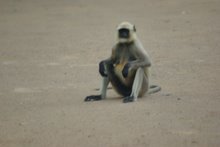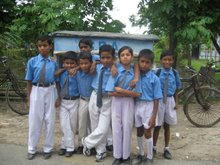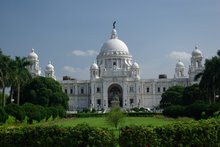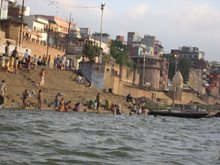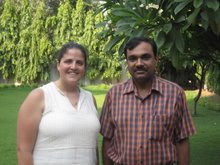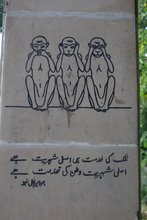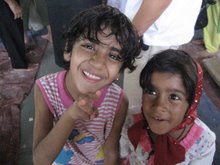We have returned to Delhi and have officially completed the bulk of our program. The last day in Mumbai was a busy and interesting one. In the morning we learned about the world famous Dabbawalla program whose owner-employees deliver hot, home-cooked meals in tiffins to 200,000 businessmen and women across the 70 km stretch of the city. And, according to their numbers, their error rate is only one in sixteen million. Wow. They are always on time. They celebrate teamwork and responsibility. They help each other with health care and sick day coverage. They wear hats and ID cards to be easily recognized and they are always on time (yes, I repeated that on purpose). My favorite thing about this program was the people – the pride I saw on the coordinator’s face as the story of the 100+ year history of this work was being told. And they do it all without technology. There are no mobile phones being used to keep track of deliveries. There is no computer system to coordinate the routes or the pick up times. The tiffins are picked up, taken to the train, sorted while on route, and then delivered within a two-hour period of time. The lids of the travel-lunch-boxes are painted with numbers and letters to ensure they reach the correct office and get returned to the right house. You might be asking yourself, “Why don’t they just carry their own lunch?” which is a question my colleague asked during the meeting. It was explained that the trains in Mumbai are so overcrowded at the morning and evening rush hours that no one dares to bring a lunch box, or even an umbrella most days, because there is simply no room (we did often see PEOPLE hanging on the side of the train, so I think I believe this statement). We even got to visit a sorting station on the street near the biggest downtown train station and see one team of dabbawallas at work – their smiles, their comraddery, their attention to detail and punctuality was impressive. I am thinking something similar in New York would only work if it was part of our culture to always have someone at home to cook the fresh meal which had to be delivered, and it would put all the delis and restaurants that deliver food out of business. Just a different economy, I guess.
That afternoon we put on our tourist hats and visited a local market (yes, Deb, this is still my favorite thing to do), found a nice man selling “God Ceramics,” and visited a mosque on an island off the shore as well as the nearby Hindu temple. The rain dampened everything I wore, but not our spirits (yes, mom, we have finally found the monsoon wetness). It was nice to have the time to pursue our own interests and to see some of the critical sites of the enormous city. It is so large that I have only seen a sliver, a small piece. But that might be enough for me. It is by far NOT my favorite city we have seen.
Back in Delhi we have had some time to ourselves as well. I must confess that on Sunday night, when most things were closed, some friends and I went to the McDonald’s in the market near our hotel (yes, my dear CSI students, I knew you’d be proud of me). It was interesting to see a menu with no beef (think about the dominant religion here) – there are several different chicken burgers, a few veggie burgers, and then a Mexican chicken wrap, and some local flavor as well. The fries, as you can guess, are the same around the world. Yum.
The list of adventures continues to grow, though perhaps it is because we feel more brave now that we are on our second visit to this city (are we getting comfortable, or have we lost the energy and interest that we had when we first arrived over a month ago?). I have risked my life to cross streets busy with rickshaws, bicycles, autos, busses, and trucks (more times than I can count). I have winced in fear as I rode in vehicles that come far too close to other moving THINGS (cow, bike, person, car, you name it). I have walked through crowds of gawking Indians who wonder at our clothes, our cameras, our hair and our presence (even in the “touristy” areas we are stared at, it seems). I have had children, women, and men offer me goods for “bargain” prices (wooden Buddha? necklace? scarf? popcorn? chai? coffee?). I have been through a lot, and yes, it has changed me. I am not as surprised by things as I was at first. I understand a lot more of what is happening around me (the poor, the children, the schools, the economy, the religions, the culture). I am still very aware of new things, of differences, and the shock of some sites will never wear off (homeless families bathing on the sidewalk, people sleeping in the middle of the day on a crowded street, trash (and other types of waste) EVERYWHERE. I know a lot more than I did six weeks ago, but I still don’t quite “get it.” There is still more to think about, to learn, to see and to do. Off to the Taj Mahal.
Wednesday, August 8, 2007
Monday, August 6, 2007
Sound the Trumpet
While looking over my pictures the other day (yes, I am working on posting some more but have encountered some difficulty) my sister-in-law noticed the "no horn" sign and jokingly said "no trumpets?" And only then did I realize the depth of the silence I have been enjoying since my return.
Traffic, you see, does not exist in the US. Even in New York I was cheerfully surprised by the lack of people cutting each other off, the existence and use of lanes, and the lack of horns. I can't say I've noticed hearing even one since my return.
In India, driving is a hazard to be sure. The roads (a term sometimes used loosely) are facing the right direction (most of the time) according to the British influence which dictates that one drive on the left, rather than the "right" side of the road. But the organization seems to end there. There are no lanes, but rather a sense that one must squeeze into any space wide enough (or close thereto) for your vehicle. Cars, therefor have their side-view mirrors folded in so as to make easy the squeezing. Rickshaws have a much easier time, since they are so narrow, and with bikes and cows included, sometimes what might only have appeared as two or three lanes has six or more "vehicles" waiting in line for a red light. That is, when the street lights are in use, or when the drivers choose to follow the suggestions of the red, yellow, and green.
The horns, though, are used for many reasons. Most trucks, buses, and auto-rickshaws actually have painted on the back of their vehicle "horn please," asking nicely for others to indicate that they'll be passing with a toot of the horn. The sound can also mean "get out of my way," "you're an animal and I think my destination is more important than yours," or "what the hell?" Whatever the message the noise is trying to convey, there are always horns. They ring in your ear after a long bus ride and resonate in your brain as you try to sleep over a busy city street. I don't know if I ever got used to the noise, but I am certainly excited about its absence here in Colorado. Peace and quiet ("I'll be quiet." ... "And I'll be peace!")
There are movements to improve the safety, though. Some of the following phrases were seen on signs (mostly in Chennai and Mumbai) promoting safe driving:
"Don't rush ... unless you have an appointment with god."
"Speed thrills, words kill ... avoid talking on your cell phone while driving."
"Good things come to those who wait ... follow traffic signals at all times."
Is it working? I don't know. I didn't witness too many accidents, though more than I would have liked. Two friends of mine were thrown from their cycle-rickshaw when it collided with another vehicle in the crowded streets of Varanasi. Our bus was rear-ended after slamming on the breaks to avoid a collision after being cut off by a truck on an open highway (no, none of us were hurt). We drove by an overturned auto (cars in India are generally very small, about the size of a Ford Focus (or smaller)) on the highway returning from Agra. The "speed bumps" are often ignored, as is the speed limit, so fences are often placed in the street which require all vehicles to zig-zag around the blockade (a bit more difficult with a bus than with a cow, I imagine). Anyway, driving in India is tough, and not something I ever want to try. I am thankful to those who got me where I needed to go safely -- that's for sure!
A driver in Varanasi told me that you need three things to drive in India: A good horn, good brakes, and good luck! How right you are, sir, how right you are.
Traffic, you see, does not exist in the US. Even in New York I was cheerfully surprised by the lack of people cutting each other off, the existence and use of lanes, and the lack of horns. I can't say I've noticed hearing even one since my return.
In India, driving is a hazard to be sure. The roads (a term sometimes used loosely) are facing the right direction (most of the time) according to the British influence which dictates that one drive on the left, rather than the "right" side of the road. But the organization seems to end there. There are no lanes, but rather a sense that one must squeeze into any space wide enough (or close thereto) for your vehicle. Cars, therefor have their side-view mirrors folded in so as to make easy the squeezing. Rickshaws have a much easier time, since they are so narrow, and with bikes and cows included, sometimes what might only have appeared as two or three lanes has six or more "vehicles" waiting in line for a red light. That is, when the street lights are in use, or when the drivers choose to follow the suggestions of the red, yellow, and green.
The horns, though, are used for many reasons. Most trucks, buses, and auto-rickshaws actually have painted on the back of their vehicle "horn please," asking nicely for others to indicate that they'll be passing with a toot of the horn. The sound can also mean "get out of my way," "you're an animal and I think my destination is more important than yours," or "what the hell?" Whatever the message the noise is trying to convey, there are always horns. They ring in your ear after a long bus ride and resonate in your brain as you try to sleep over a busy city street. I don't know if I ever got used to the noise, but I am certainly excited about its absence here in Colorado. Peace and quiet ("I'll be quiet." ... "And I'll be peace!")
There are movements to improve the safety, though. Some of the following phrases were seen on signs (mostly in Chennai and Mumbai) promoting safe driving:
"Don't rush ... unless you have an appointment with god."
"Speed thrills, words kill ... avoid talking on your cell phone while driving."
"Good things come to those who wait ... follow traffic signals at all times."
Is it working? I don't know. I didn't witness too many accidents, though more than I would have liked. Two friends of mine were thrown from their cycle-rickshaw when it collided with another vehicle in the crowded streets of Varanasi. Our bus was rear-ended after slamming on the breaks to avoid a collision after being cut off by a truck on an open highway (no, none of us were hurt). We drove by an overturned auto (cars in India are generally very small, about the size of a Ford Focus (or smaller)) on the highway returning from Agra. The "speed bumps" are often ignored, as is the speed limit, so fences are often placed in the street which require all vehicles to zig-zag around the blockade (a bit more difficult with a bus than with a cow, I imagine). Anyway, driving in India is tough, and not something I ever want to try. I am thankful to those who got me where I needed to go safely -- that's for sure!
A driver in Varanasi told me that you need three things to drive in India: A good horn, good brakes, and good luck! How right you are, sir, how right you are.
Sunday, August 5, 2007
A Woman of Power in India
So while I was visiting Chennai, the parliament of India elected their next President. A woman named Pratibha Patil, a member of the ruling party of the government, which made it no surprise, and in fact hardly even newsworthy. I wouldn’t even have known about the election except for a lovely conversation with the principal of the school we visited that morning, and the occasional mention of a changing of the guard in the newspaper (the farewell speech of the old Pres made the cover page rather than the swearing in of the new one … interesting). Anyway, Grace has mentioned that this is the first occasion on which a female is the leader of the largest democracy in the world, and one of the nations growing as an economic power to match it’s population domination. The truly interesting point, though, is how out of place this feels when you’re in the country, among the men and women there, and how the latter are treated.
Women are respected, I guess, but nor revered in India. In fact, on several occasions we female guests were ignored by men who wanted to talk with the five male members of our group. I saw men go ahead of women to get on a bus, and men were often served drinks and food before we were. That’s not to say that women were treated poorly. There were some at the stores we visited and quite a few employed at the five start hotels we used. But they weren’t seen often. As I mentioned on my first day in Delhi, we simply didn’t see any women. It wasn’t until the second city, Varanasi, that Geoff noticed women riding motorcycles by themselves. The female principals we met were treated like queens, but when we met with male school leaders we learned that this had more to do with the position than with their gender. The male teachers at every school seemed to hold a more revered status than the women, and they refer to the gentlemen as “sir” more than I heard anyone refer to them as “miss” or “madam.”
And so there is this juxtaposition. Many of the women don’t leave their houses during the day and the ruler of the democratic nation is female. Is this a sign of the development of this country? Or is it the corruption of the political system? Or perhaps a signal that ancient traditions are fading away. Maybe it’s just a coincidence. When I asked some teachers and administrators at the Atomic Energy Schools what it meant for them to have a female president, they explained that because the citizens are not part of that election process it doesn’t affect them very much. The Presidential election in India is not a participatory process – only the parliament casts vote for the leader and for years now the elected official has always been the leader or representative of the political party with the greatest numbers in the parliament. And so the citizens with whom I spoke felt very disconnected from the whole thing. These citizens were, of course, men.
All that said, please know that we were treated very well in every part of India. It is simply interesting to see some of the differences between our cultures. I was never part of a family or a place where the women stay at home, and I have only lived in a country where women have the right to vote (now) and are getting equal pay (or something close). I don’t know enough about what’s happening in India to know if these privileges are missing for women there, but hope to learn more. I met a lot of powerful and very smart women. I think I wrote already that one of our speakers said that out of 100 girls who start school in Class I, only one will graduate from Class XII. But the schools I saw and the women I met are proof against that statistic, I think. For the country is filled with bright, thoughtful, successful, and talented women who are fulfilling their dreams and wear beautiful smiles to match their saris.
Women are respected, I guess, but nor revered in India. In fact, on several occasions we female guests were ignored by men who wanted to talk with the five male members of our group. I saw men go ahead of women to get on a bus, and men were often served drinks and food before we were. That’s not to say that women were treated poorly. There were some at the stores we visited and quite a few employed at the five start hotels we used. But they weren’t seen often. As I mentioned on my first day in Delhi, we simply didn’t see any women. It wasn’t until the second city, Varanasi, that Geoff noticed women riding motorcycles by themselves. The female principals we met were treated like queens, but when we met with male school leaders we learned that this had more to do with the position than with their gender. The male teachers at every school seemed to hold a more revered status than the women, and they refer to the gentlemen as “sir” more than I heard anyone refer to them as “miss” or “madam.”
And so there is this juxtaposition. Many of the women don’t leave their houses during the day and the ruler of the democratic nation is female. Is this a sign of the development of this country? Or is it the corruption of the political system? Or perhaps a signal that ancient traditions are fading away. Maybe it’s just a coincidence. When I asked some teachers and administrators at the Atomic Energy Schools what it meant for them to have a female president, they explained that because the citizens are not part of that election process it doesn’t affect them very much. The Presidential election in India is not a participatory process – only the parliament casts vote for the leader and for years now the elected official has always been the leader or representative of the political party with the greatest numbers in the parliament. And so the citizens with whom I spoke felt very disconnected from the whole thing. These citizens were, of course, men.
All that said, please know that we were treated very well in every part of India. It is simply interesting to see some of the differences between our cultures. I was never part of a family or a place where the women stay at home, and I have only lived in a country where women have the right to vote (now) and are getting equal pay (or something close). I don’t know enough about what’s happening in India to know if these privileges are missing for women there, but hope to learn more. I met a lot of powerful and very smart women. I think I wrote already that one of our speakers said that out of 100 girls who start school in Class I, only one will graduate from Class XII. But the schools I saw and the women I met are proof against that statistic, I think. For the country is filled with bright, thoughtful, successful, and talented women who are fulfilling their dreams and wear beautiful smiles to match their saris.
Saturday, August 4, 2007
Final Days in India
I’ve written a post that will be online as soon as my friend sends it to me, about how things were different when we returned to Delhi, how I felt like I knew a lot more but also had a million more questions.
As I look back on my final few days in India, I am overwhelmed by a great many things. I haven't been able to write enough, or think enough, or reflect on my experiences in the past few days because of time constraints and other things that kept me away from the computer. Trust me when I say that the end of my journey was even more powerful than everything I have written about so far.
Our adventure to Agra was fantastic. We took a four hour ride through some of the countryside of northern India and along the way we ran into a snake charmer (yes, I was afraid, even though the snakes stayed off the bus (for the most part)), some pet monkeys (these made me sad because it was clear they were not treated well), as well as camels and other animals along the side of the road. It was a nice break from the bustle of airports we had been experiencing recently. That afternoon we visited a ghost city that was once the capital of India. The remains are being re-built to show amazing architecture and intricate structures that amaze and impress. It was hollowing to walk through the stone maze, to see the tunnels of columns, the spot where rich men played Parcheesi with women as the pieces, and the temple where parrots now dwell in the cracks that heard prayers hundreds of years ago. And then we visited a giant mosque, open aired and touristy (unlike those in other regions of the country, like Kashmir), and filled with people. Although we had our group tour guide I was immediately joined by a young man who said he was a student at the Madrasa inside the walls of the mosque. He kindly showed me around and told me the carefully memorized facts about the place that he knew so well. And as the rain began to fall I talked with this boy and my new friend, saw the areas for prayer and for selling trinkets, and moved carefully among gravestones from a different era. And it was wet, but lovely.
And the next day we saw the Taj. Early in the morning, when only a few other foreign and Indian tourists have made it to the entrance, the sun rose on the Taj Mahal. And the beauty of this place dedicated to a dead wife and mother was slowly illuminated in shades of pink and yellow. And the palace is beautiful and it fills you with wonder at the construction, envy of the passion, and admiration of the symmetry. For every stone on the left there is a stone on the right. Inch for inch, flower for flower, tower for tower. The flowers – ornate stones carefully placed into minute crevices carved into the finest quality of marble and made permanent with a special glue (I saw a demonstration of the technique the night before, and the finite handiwork was marvelous). There is so much detail at every level. Geoff said it best when he pointed out that the vastness of the beauty and the detail was overwhelming. Like when you look at something from very far away, and slowly start to zoom in as you get closer and closer and are able to see more of the specifics (Cassie, what is the name of that book?), like the power of 10 movie and website. Every step closer leaves you with more questions about what it looks like up close.
At the Taj that peaceful morning I was grateful for the serenity, the architecture, the geometry, the silence, the history, and the company. To walk through that place in pleasant conversation mixed with necessary silences was perfect. I couldn’t have imagined a better experience.
After another frightful bus ride back to the city, we enjoyed our own farewell dinner. It was a lovely event attended by those who knew us and those who knew of us. I met some lovely Americans who are currently in India for a number of reasons and also had time to talk with my cooperating teacher. I enjoyed the celebratory atmosphere, the words of our “uncle,” and the presence of so many friendly guests. And then the rains came and it was the end of our trip. We spent the time DE-BREIFING the trip (yes, students and colleagues, it’s an international phenomenon!) and then the hours counted down until the trip to the airport for the long trip home.
Though this will not be my last blog posting, it does tell the story of the end of the trip. I thought you would all want to know how the whole thing ended, although I am acutely aware of the fact that my learning has really just gotten started. As I look at the materials I have brought home for my office and for school, for my family and friends and for myself I realize that I have a lot to process. I want to make sure to take the time to re-live certain experiences, to tell the stories of certain events, and to remember the thoughts and feelings that were stirred up on the trip. Over the next several days I will continue to process all that I went through and try to find the best way to share it with all of you.
As I look back on my final few days in India, I am overwhelmed by a great many things. I haven't been able to write enough, or think enough, or reflect on my experiences in the past few days because of time constraints and other things that kept me away from the computer. Trust me when I say that the end of my journey was even more powerful than everything I have written about so far.
Our adventure to Agra was fantastic. We took a four hour ride through some of the countryside of northern India and along the way we ran into a snake charmer (yes, I was afraid, even though the snakes stayed off the bus (for the most part)), some pet monkeys (these made me sad because it was clear they were not treated well), as well as camels and other animals along the side of the road. It was a nice break from the bustle of airports we had been experiencing recently. That afternoon we visited a ghost city that was once the capital of India. The remains are being re-built to show amazing architecture and intricate structures that amaze and impress. It was hollowing to walk through the stone maze, to see the tunnels of columns, the spot where rich men played Parcheesi with women as the pieces, and the temple where parrots now dwell in the cracks that heard prayers hundreds of years ago. And then we visited a giant mosque, open aired and touristy (unlike those in other regions of the country, like Kashmir), and filled with people. Although we had our group tour guide I was immediately joined by a young man who said he was a student at the Madrasa inside the walls of the mosque. He kindly showed me around and told me the carefully memorized facts about the place that he knew so well. And as the rain began to fall I talked with this boy and my new friend, saw the areas for prayer and for selling trinkets, and moved carefully among gravestones from a different era. And it was wet, but lovely.
And the next day we saw the Taj. Early in the morning, when only a few other foreign and Indian tourists have made it to the entrance, the sun rose on the Taj Mahal. And the beauty of this place dedicated to a dead wife and mother was slowly illuminated in shades of pink and yellow. And the palace is beautiful and it fills you with wonder at the construction, envy of the passion, and admiration of the symmetry. For every stone on the left there is a stone on the right. Inch for inch, flower for flower, tower for tower. The flowers – ornate stones carefully placed into minute crevices carved into the finest quality of marble and made permanent with a special glue (I saw a demonstration of the technique the night before, and the finite handiwork was marvelous). There is so much detail at every level. Geoff said it best when he pointed out that the vastness of the beauty and the detail was overwhelming. Like when you look at something from very far away, and slowly start to zoom in as you get closer and closer and are able to see more of the specifics (Cassie, what is the name of that book?), like the power of 10 movie and website. Every step closer leaves you with more questions about what it looks like up close.
At the Taj that peaceful morning I was grateful for the serenity, the architecture, the geometry, the silence, the history, and the company. To walk through that place in pleasant conversation mixed with necessary silences was perfect. I couldn’t have imagined a better experience.
After another frightful bus ride back to the city, we enjoyed our own farewell dinner. It was a lovely event attended by those who knew us and those who knew of us. I met some lovely Americans who are currently in India for a number of reasons and also had time to talk with my cooperating teacher. I enjoyed the celebratory atmosphere, the words of our “uncle,” and the presence of so many friendly guests. And then the rains came and it was the end of our trip. We spent the time DE-BREIFING the trip (yes, students and colleagues, it’s an international phenomenon!) and then the hours counted down until the trip to the airport for the long trip home.
Though this will not be my last blog posting, it does tell the story of the end of the trip. I thought you would all want to know how the whole thing ended, although I am acutely aware of the fact that my learning has really just gotten started. As I look at the materials I have brought home for my office and for school, for my family and friends and for myself I realize that I have a lot to process. I want to make sure to take the time to re-live certain experiences, to tell the stories of certain events, and to remember the thoughts and feelings that were stirred up on the trip. Over the next several days I will continue to process all that I went through and try to find the best way to share it with all of you.
Thursday, August 2, 2007
Last Day Craze
No, I haven't fallen off the face of the earth, but internet access has been limited. I have scripted a few posts which I'll put on the blog soon, but am getting ready to leave and doing final good-byes, formal events, and last minute errands. All is well, and I will tell you of my last week in India soon!
Subscribe to:
Posts (Atom)




